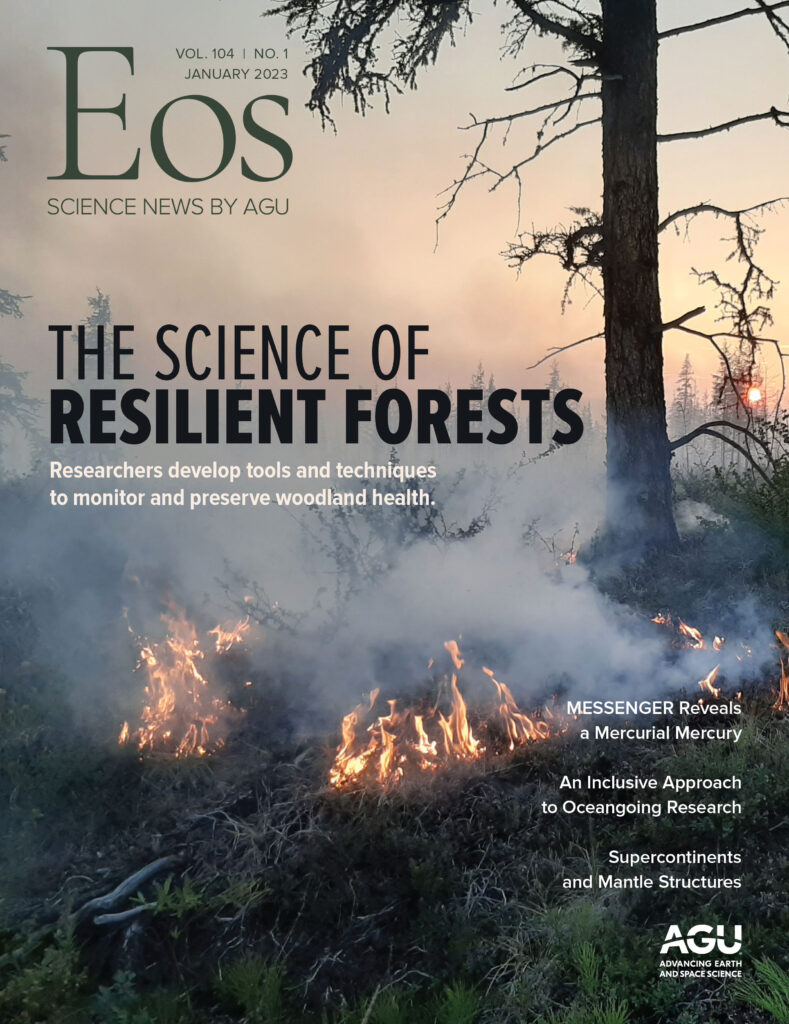This month, Eos takes a walk in the woods to explore how forests are faring and what strategies are helping to strengthen our approaches to fire ecology.
In “For Western Wildfires, the Immediate Past Is Prologue,” Ronnie Abolafia-Rosenzweig, Cenlin He, and Fei Chen strike an appropriately Shakespearean chord when noting that “the tight coupling between climate and fire in the western United States has been enhanced by the legacy of fire suppression and a lack of prescribed burning.” Throughout this issue, scientists, historians, and policymakers echo this scrutiny of the long legacy of fire suppression in the U.S. West. They also work to address it: In this article, authors use burgeoning possibilities offered by satellite observation and machine learning to uncover the extent of burned areas and produce more accurate forecasts of summer fire activity.
We hope this issue of Eos offers you some practical hope by way of solutions-oriented approaches to wildfire ecology.
Scientists studying refugia—those elusive patches of forest that evade incineration—are similarly researching ecosystems made unpredictable by human activity and climate change. “Last Tree Standing” by Robin Donovan documents how scientists analyze the seemingly arbitrary distribution of forest refugia and use tools ranging from seed-dispersal databases to Traditional Knowledge frameworks to predict and preserve them.
Finally, by taking “A Lidar’s-Eye View of How Forests Are Faring,” scientists use a familiar and flexible technology to reveal a holistic portrait of forested landscapes. Van R. Kane, Liz Van Wagtendonk, and Andrew Brenner provide dazzling lidar images of Yosemite National Park while detailing how such data are not limited to fire management applications.
In addition to these deep dives out West, this month offers introductions to Free-Air CO2 Enrichment technology in the Amazon and the Internet of Things in Germany’s Black Forest. We hope this issue of Eos offers you some practical hope by way of solutions-oriented approaches to wildfire ecology.
—Caryl-Sue Micalizio ([email protected]), Editor in Chief


